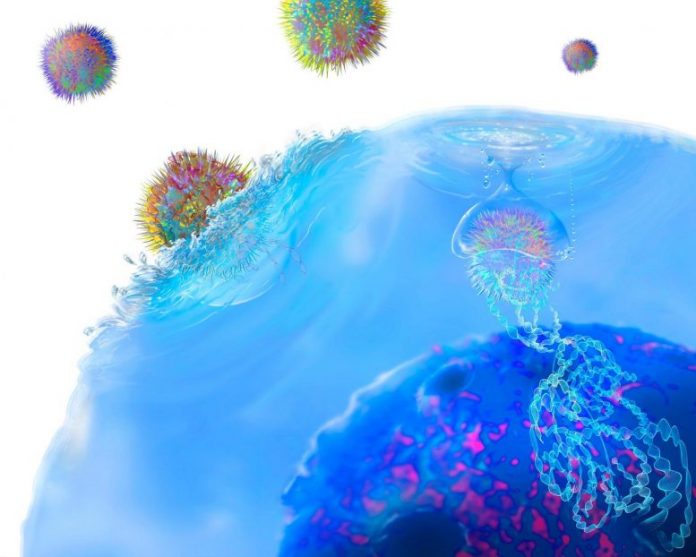Scientists at UCL have identified a new immunotherapy to combat the hepatitis B virus (HBV), the most common cause of liver cancer in the world.
Each year, globally, chronic HBV causes an estimated 880,000 deaths from liver cirrhosis and hepatocellular carcinoma/liver cancer (HCC).
The pioneering study used immune cells isolated directly from patient liver and tumour tissue, to show that targeting acyl-CoA:cholesterol acyltransferase (ACAT), an enzyme that helps to manage cholesterol levels in cells*, was highly effective at boosting immune responses.
Published in Nature Communications, the findings show that blocking the activity of ACAT with ACAT inhibitors boosts the specific immune cells that can fight both the virus and associated cancerous tumours, demonstrating its effectiveness as an immunotherapy. Inhibiting ACAT was also found to impede HBV’s own replication, thereby also acting as a direct antiviral. ACAT inhibitors such as avasimibe, taken orally, have previously been shown to be well-tolerated as cholesterol-lowering drugs in humans.
Explaining the study, lead author Professor Mala Maini (UCL Division of Infection & Immunity), said: “Chronic hepatitis B virus infection is a major global health problem and the most common cause of liver cancer in the world.
“The development of novel therapeutic options is crucial to improve patient care. Immune cells such as T cells are indispensable for fighting viruses and tumours but are often highly dysfunctional and fail to control these diseases. Current standard of care treatments are often incapable of eliminating the virus, do not prevent cancer development and do not rescue immune cells.
“In this study we aimed to identify a treatment target to directly inhibit the virus while also boosting the immune cells fighting it.”
Cholesterol is a lipid (fat) that we ingest every day in our diets and that can exert multiple functions within different cells of the body. HBV infects the liver, an organ highly enriched in cholesterol and well known for limiting local immune responses.
In this study, using human liver disease tissue samples in vitro, Professor Maini’s lab at UCL showed that ACAT inhibitors boosted human antiviral T cells capable of eliminating the virus. This response is in contrast to currently available therapies. The immune-boosting effect was especially striking in T cells found in the HBV-infected liver and within liver cancer, overcoming the local restraints on immune cell function, allowing the T cells to target both the virus and cancerous cells.
The Maini group then collaborated with Professor Jane McKeating’s lab at the University of Oxford to show that ACAT inhibitors could also block the HBV life cycle in a way that other antivirals are unable to. These drugs therefore have a unique combination of antiviral and immunotherapeutic effects.
Commenting on the findings, first author Dr Nathalie Schmidt (UCL Division of Infection & Immunity), said: “We have found a highly effective novel target for the treatment of chronic hepatitis B virus infection and liver cancer.
“Modulating cholesterol metabolism with ACAT inhibitors has the unique features of directly targeting the virus and tumours while at the same time boosting the T cells that fight them. This enables us to tackle the disease from multiple directions at the same time.”
Dr Schmidt added: “The cholesterol-modifying drug is already known to be safe in humans and we hope that our study now informs the development of clinical trials combining cholesterol modulation with other immunotherapies. In summary, our findings offer exciting new possibilities for the treatment of patients with chronic viral infections and cancer.”
This research was carried out by researchers at UCL, supported by the University of Oxford, the Royal Free London NHS Trust, and Leiden University Medical Centre, the Netherlands.
Grant funding came from the Wellcome Trust and Cancer Research UK.
*The enzyme is required for cholesterol esterification, a mechanism which prevents excessive cellular levels of cholesterol, which can be toxic to cells.








